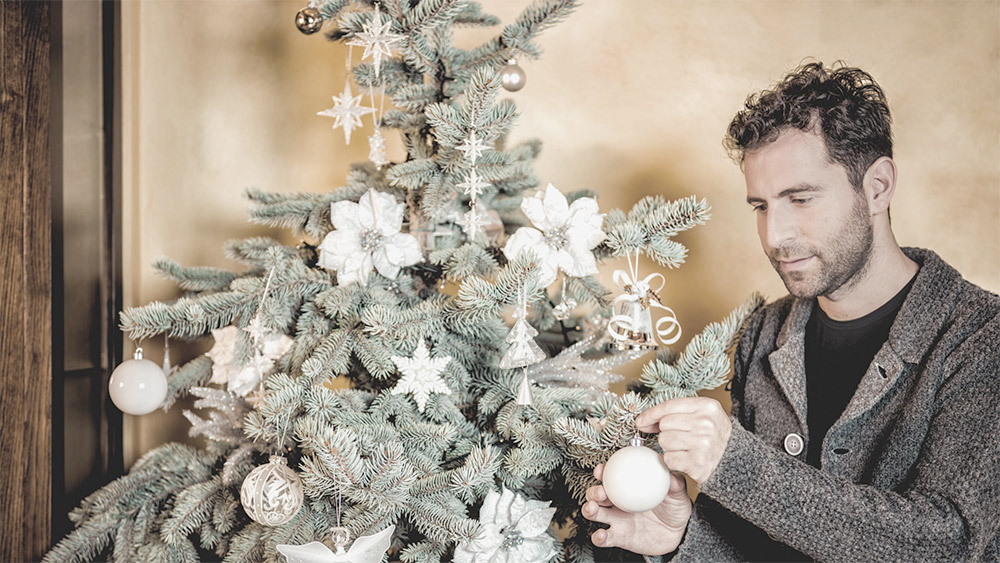This time of year, in homes around the world, it’s a familiar sight: the fir tree festooned with lights, ornaments, and other decorations. Not everyone celebrates Christmas and not everyone who does partake in the tradition. But for the millions of households that do, the winter season doesn’t feel quite right without a Christmas tree.
But where does the tradition come from, to begin with? And how will the tumultuous events of the past couple of years impact it? Get your cup of hot cocoa ready and settle next to the fire (or the TV version of one, if it’s too hot where you live for the real thing), and learn more about the familiar tradition of the Christmas tree.
The History of the Christmas Tree
During the long, dark days of winter, humans have long viewed evergreen trees and boughs as a reminder that greener days were ahead. Long before Christmas trees came to be associated with a Christian holiday, they were used by multiple cultures to honor the solstice—the night of the year that the ancient Romans and Egyptians alike celebrated the coming spring.
A more familiar form of the tradition we know today came about in Germany in the 16th century, when Christians began bringing evergreen trees into their homes and decorating them. German settlers to the United States were decorating fir trees in their home for Christmas as early as the mid-1700s, but the tradition was seen as strange and pagan by many people in the U.S. well into the 19th century. It wasn’t until the 1890’s that Christmas trees started to gain popularity in the U.S., and the tradition has stuck around ever since.
6 Fast Facts About Christmas Trees
- Approximately 25-30 million real Christmas trees are sold in the U.S. in a typical year, according to the National Christmas Tree Association. (Source)
- Real Christmas trees take an average of 6-8 years to grow to maturity, but some can take 15 years, and others as little as 4 years. (Source)
- Christmas trees are grown in all 50 U.S. states on nearly 15,000 farms that employ over 100,000 people. (Source)
- 77% of U.S. households celebrate the season with a Christmas tree. (Source)
- Around 82% of all Christmas trees U.S. families use are artificial, and just under 18% are real. (Source)
- The most famous Christmas tree in the U.S., the Rockefeller Tree, is located in Rockefeller Center in New York City. This year’s tree lighting ceremony was the 88th, and the tree shines with over 50,000 lights. (Source)
Modern Christmas Tree Concerns
Selecting a Christmas tree has become more complicated in our current times. Today, third party risks and concerns touch even the beloved Christmas decoration.
Supply Chain Considerations
Last year, anyone who used to take their ability to buy a Christmas tree for granted learned otherwise. Due to a combo of factors, the stock of trees was lower than the demand.
Part of the cause was the general migration of people during the pandemic. The increase of work-from-home options which allow knowledge workers to do their jobs from anywhere inspired many to move to new cities across the country. As a result, local suppliers didn’t know the right amount of demand to account for, an issue that may continue this year.
In addition, extreme weather events like wildfires and droughts have made growing trees more difficult. That means having the supply to meet demand is harder than ever.
And of course, trees face the same issues impacting the supply chain across industries right now. A shortage of truck drivers means that getting the trees from where they’re grown to where they’re sold is a complicated process. A shortage of workers in general means that, at many farms, even getting trees cut down and moved to a truck to be delivered could be an issue.
And since many artificial Christmas trees are manufactured in China and shipped to the U.S., their availability will be heavily impacted by the current traffic and bottlenecks at U.S. ports. If buying an artificial tree seems like the obvious solution to a shortage of real trees, you better be prepared to pay a premium.
Scam Concerns
Whenever there’s a shortage of an item in high demand, scammers see an opportunity. Bad actors are likely to take advantage of the shortage to lure people into handing over financial information via phishing emails or text messages promising great prices on Christmas trees. That’s a threat to any individuals hoping for a good deal, or simply to find a Christmas tree in an area where the stock is mostly sold out. But it’s also a risk to companies—if an employee clicks on a scammy link in an email while on a company device, it could open up your internal systems to cybersecurity risks.
Don’t trust everything that hits your inbox or mobile device. If a deal looks too good to be true, be skeptical. Check out the company’s website directly rather than clicking on a link in an unsolicited email or text you receive. And train employees at your organization to do the same.
Environmental Impact
Individuals and businesses alike now need to factor environmental impacts into their decision-making.
Buying a real Christmas tree means supporting an industry that plants 1-3 new trees for every tree cut down, which contributes to removing carbon and putting oxygen back into the atmosphere. And now that many cities have composting programs for Christmas trees, you don’t have to worry about the trees contributing to waste. In fact, some coastal cities are putting recycled Christmas trees to use to help shore up sand dunes and prevent coastal erosion. And the Arbor Day Foundation’s Time for Trees initiative has now planted 100 million trees and inspired five million tree planters.
Artificial trees have the benefit of being reusable, but because the manufacturing process requires a lot of resources, they’re made of plastic, and they’re frequently shipped far from where they’re made, their environmental impact can be troubling. CarbonTrust estimates that artificial trees typically need to be used for over 10 years to be better for the environment than real ones.
How to Keep Your Christmas Traditions This Year
After the 20 months, we’ve all had, keeping family traditions that can return some sense of normalcy feels more important than ever. But various issues will make having a Christmas tree harder this year than in the past. So what can you do?
Buy Early
To be frank, at this point in the season you’re already late. But if you can identify a place in your general area where you can put in an order, do it now. This is a good practice to get in the habit of for any products you care about in the new age of COVID-19 and supply chain issues. Always buy early.
That Failing, Get Creative
If you’re already too late and no Christmas trees are available in your area (or not at a price point you can manage), then think about ways to replicate the experience. Consider decorating one of the trees in your yard, or buying a balled Christmas tree that you can plant after the holiday passes and have around in your yard for next year.
Consider other forms of decoration to make your space feel festive. Maybe brainstorm as a family and do crafts together, or find some nice ferns from outside to bring inside and decorate. . As much as you may have hoped for a Christmas tree to be the centerpiece of your holiday decorations, the lack of one could serve as an opportunity to develop a new holiday tradition your family enjoys just as much.



